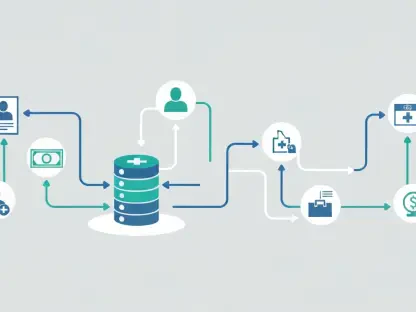Software supply chain security has become a burgeoning concern in recent years, reflected starkly in the findings of a recent global survey conducted by Checkmarx. The survey engaged 900 application security professionals and unearthed unsettling statistics: nearly two-thirds revealed their organizations had experienced compromises within their software supply chains over the past two years. Of these, 18% faced such dilemmas just in the last year, painting a grim picture of the current security landscape. Alarmingly, every single respondent acknowledged awareness of at least one breach in their software supply chain within the past year.
Rising Concerns and Insufficient Measures
Industry Perspectives on Security Vulnerabilities
A critical concern emerging from this survey is the escalating anxiety regarding software supply chain security among industry professionals. A significant 75% of respondents expressed considerable worries about security vulnerabilities, signaling that these issues are not only prevalent but also highly prioritized. Yet, the survey results expose a dichotomy between concern and action. While 57% of professionals have flagged software supply chain security as a critical area, a startlingly low number—just 7%—have taken substantive steps to address these vulnerabilities by deploying specific tools or platforms.This discrepancy suggests that recognizing the problem is merely the first step; the complex nature of implementing robust security measures poses significant challenges. Security solutions must be tailored to the intricacies of software development and deployment processes, necessitating not just financial investment but also a strategic overhaul. Industry experts argue that alongside technological solutions, a cultural shift within organizations is vital. Developers, often incentivized to roll out new features rapidly, need to prioritize security as a foundational aspect of their work, not an afterthought.
The Role of SBOMs and Zero-Trust Models
Adding another layer to the complexity is the increasing call for Software Bill of Materials (SBOMs). An SBOM provides a comprehensive inventory of all components within a software product, laying the groundwork for better vulnerability management. According to the survey, 50% of organizations are now demanding SBOMs from their software vendors. Despite this rising demand, only 47% of respondents feel their organizations are currently capable of effectively leveraging SBOMs in operational frameworks.This gap between demand and capability points to a broader issue within the industry—there’s a discernible need for comprehensive tools and practices that can parse and implement these SBOMs efficiently. Zero-trust frameworks and advanced vulnerability detection tools stand out as critical components in this evolving security landscape. However, realizing the full potential of these tools requires not just technological innovation but also an extensive organizational commitment to security protocols. The transition to such models represents a significant shift in how security is integrated into the entire software supply chain lifecycle.
The Multifaceted Approach to Security
Leadership and DevSecOps Practices
Renny Shen, vice president of portfolio marketing at Checkmarx, underscores the breadth and complexity of securing software supply chains. His observations point to a multifaceted approach that goes beyond merely deploying tools. Successful supply chain security necessitates a synergy of updated DevSecOps practices, zero-trust initiatives, and a profound cultural transformation within organizations. Tools alone are insufficient if the underlying human and operational dynamics do not align with security protocols. Developers’ traditional focus on innovating new code rather than improving existing systems compounds the difficulty in maintaining robust security measures.To tackle this pervasive issue, Shen advocates for a stronger alignment between business goals and security needs. Incentivizing developers to integrate security into their daily workflow can fundamentally alter the security landscape. This involves not only reshaping organizational policies but also investing in training and resources to enhance developers’ capabilities. Moving towards a security-first mindset requires a strategic investment in both human capital and advanced technologies, laying a foundation for a resilient security posture.
The Promise and Reality of AI in Security
Another intriguing aspect explored in the article is the potential of generative AI to revolutionize vulnerability detection and remediation. AI technologies hold promise for automating patch creation, providing a proactive measure against security breaches. However, despite these optimistic future prospects, achieving rigorous supply chain security remains an intricate challenge. Organizations often rely on open-source packages maintained by external entities, which introduces additional risks.AI’s potential to autonomously detect and rectify vulnerabilities could greatly expedite the security process, yet it necessitates substantial refinement and oversight to be fully effective. Moreover, generative AI should complement rather than replace human expertise. Vigilance and continuous monitoring remain critical, as even advanced AI systems require direction from knowledgeable security professionals. Maintaining a vigilant stance ensures that emerging threats are swiftly identified and mitigated, sustaining the integrity of software supply chains.
Conclusion
Bridging the Gap Between Awareness and Action
In recent years, software supply chain security has emerged as a pressing issue, highlighted by a recent global survey from Checkmarx. This survey, which polled 900 application security professionals, has unveiled some concerning statistics. Almost two-thirds of the participants disclosed that their organizations had been compromised within their software supply chains over the past two years. Specifically, 18% reported experiencing breaches within just the past year, reflecting a deteriorating security landscape. Even more alarming, every single respondent knew of at least one breach in their software supply chain in the past year, underscoring the pervasive nature of this security threat. This troubling trend signals the need for improved measures and strategies to safeguard software development and deployment processes. Companies must focus on enhancing their security frameworks, investing in robust tools, and fostering a culture of security awareness if they are to mitigate these risks effectively. The findings from Checkmarx serve as a wake-up call for the industry, emphasizing the urgency for concerted efforts to bolster the defenses of software supply chains.









